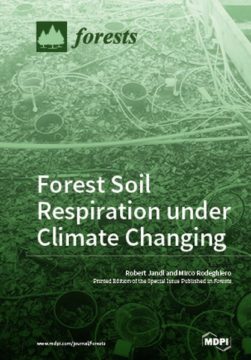The respiration of forest soils and the major factors controlling its rate are fairly well understood. The process is of utmost significance because its balance with the fixation of CO2 in the biomass defines whether a particular site is a source or sink of atmospheric CO2. Currently, the measurement of soil respiration in the field requires rather expensive experimental installations. Nevertheless, there are still some caveats in our understanding, such as the separation of autotrophic and heterotrophic soil respiration, the relevance of different groups of soil organisms, the effect of ecosystem disturbances in different types of forests on soil respiration with respect to magnitude and duration, the adaptation of soil respiration to changing site conditions, and the regional prediction of soil respiration, based on proxy data. Technical progress and additional contributions on process understanding will put us in the position of better predictions of the forest soil respiration. We encourage studies from all fields, including experimental studies, monitoring approaches and models, to contribute to this Special Issue in order to promote knowledge and adaptation strategies for the preservation, management, and future development of forest ecosystems.
- Veröffentlicht am Dienstag 18. September 2018 von MDPI
- ISBN: 9783038971788
- 186 Seiten
- Genre: Kinder- und Jugendbücher, Natur, Pflanzen, Sachbilderbücher, Sachbücher, Tiere, Umwelt
